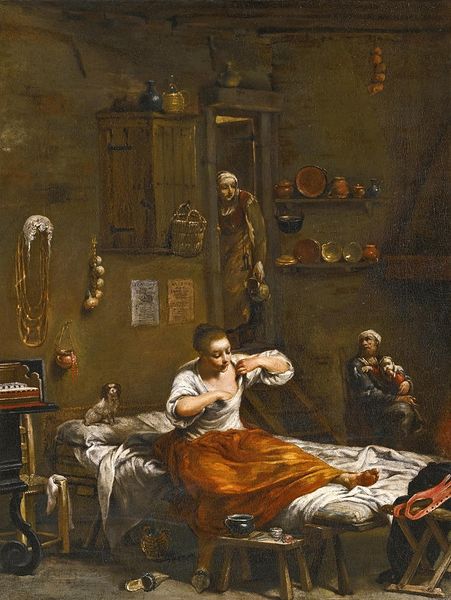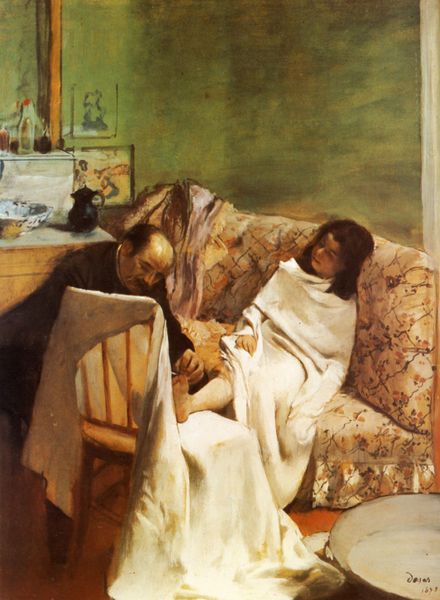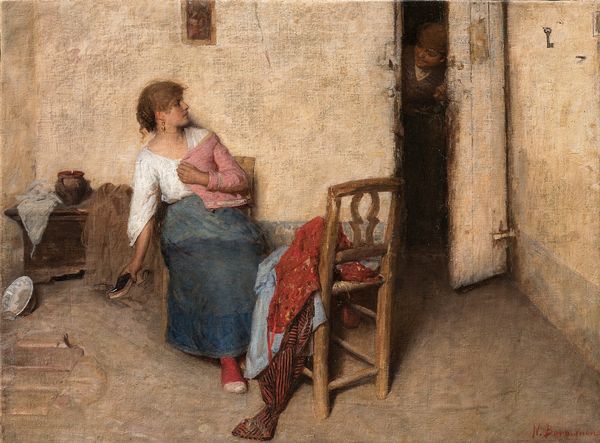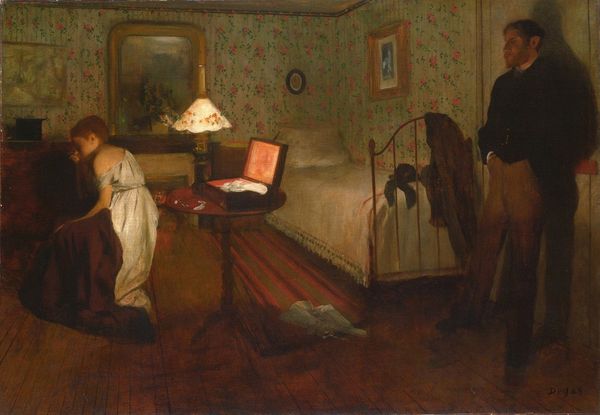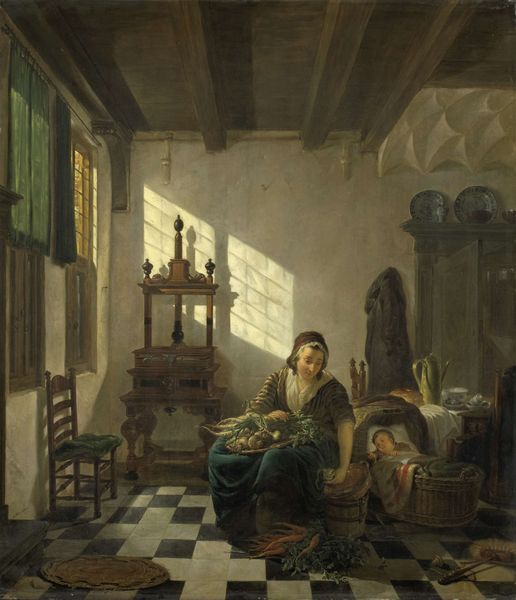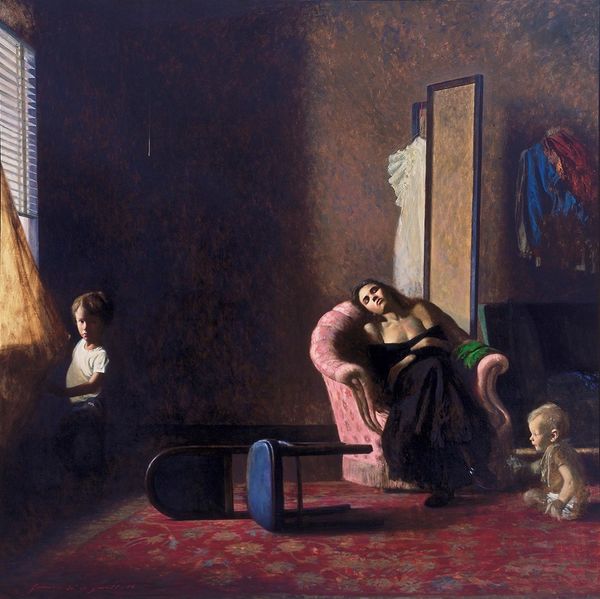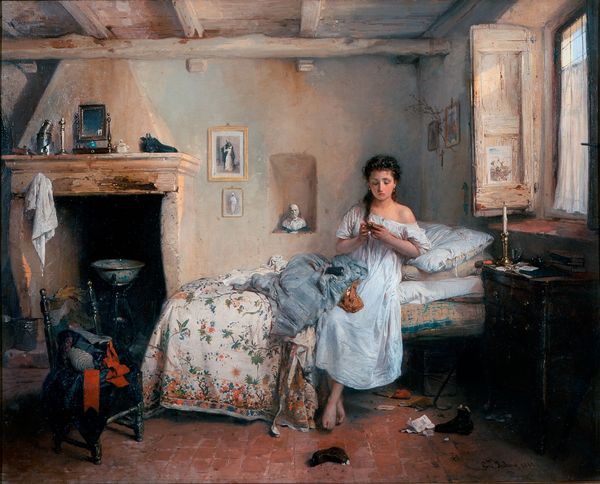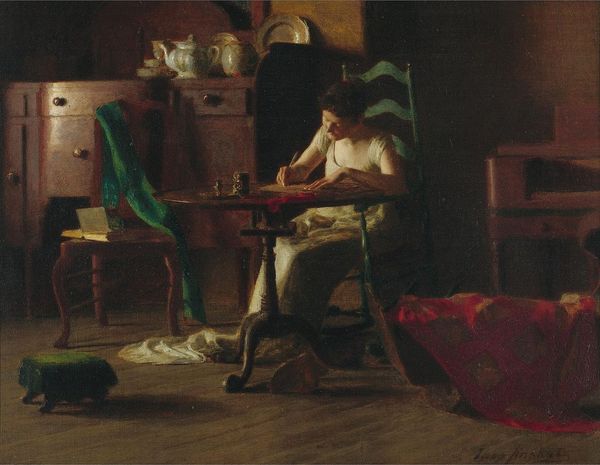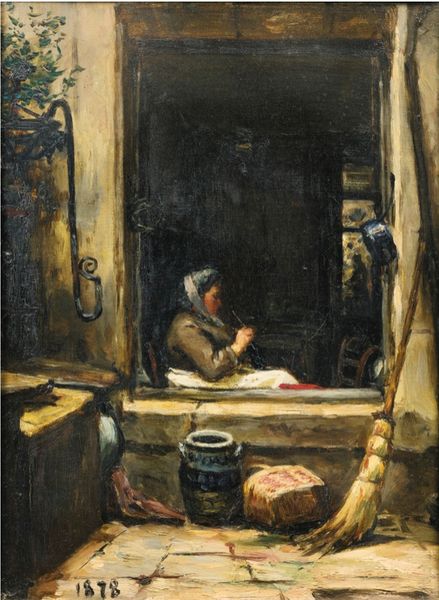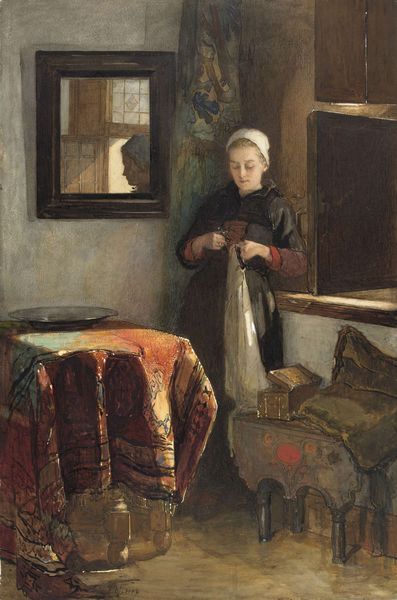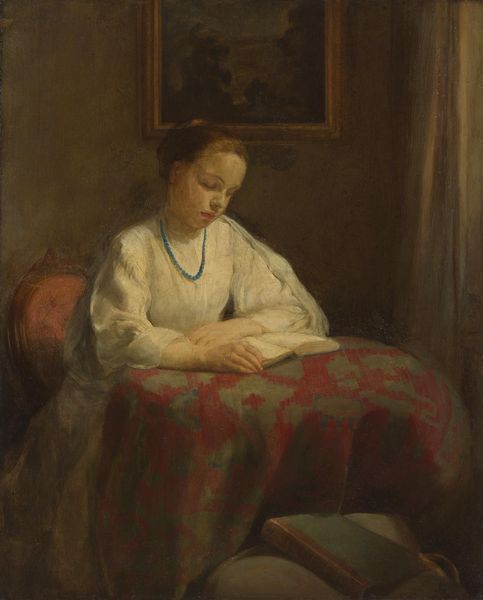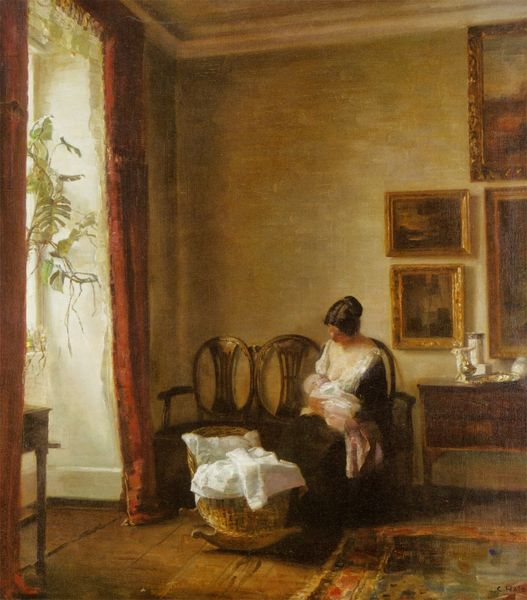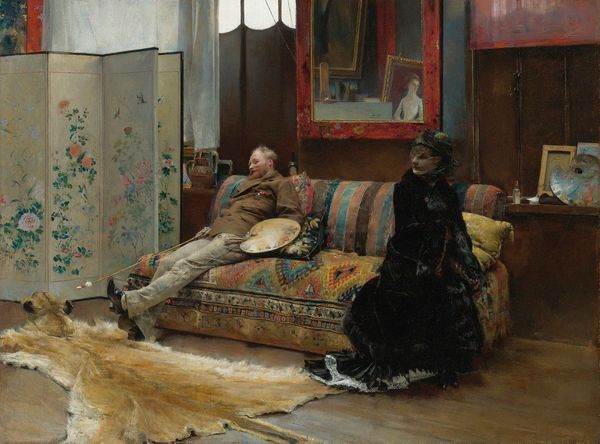
painting, oil-paint
#
portrait
#
gouache
#
baroque
#
dutch-golden-age
#
painting
#
oil-paint
#
genre-painting
Dimensions: 87.6 x 76.5 cm
Copyright: Public domain
Curator: This is Johannes Vermeer's "A Maid Asleep," painted around 1657, currently residing here at the Metropolitan Museum of Art. Editor: The first thing that strikes me is the silence. That quiet, heavy-lidded fatigue we’ve all felt— Vermeer captured a universal, suspended moment. It's remarkably intimate for a painting from so long ago. Curator: Absolutely. Looking at it from a materialist perspective, notice how Vermeer meticulously depicts the objects - the ceramic jug, the scattered fruit. These aren't just decorative; they're indicators of trade and Dutch prosperity, goods passing through Delft. The gorgeous carpet suggests trade with the Ottoman Empire or Persia. Editor: The rug—it practically shimmers. The way the light catches the weave is intoxicating. I wonder if she's dreaming of distant lands. It almost feels like the patterns are subtly mocking her stillness, buzzing with vibrant energy against her own quiet slumber. Curator: Interesting. From a social perspective, consider the representation of labor here. A sleeping maid challenges conventional ideals. Is she overworked, exploited, or perhaps momentarily escaping the demands of her daily life? It speaks to a dynamic— or, arguably, an imbalance—in social hierarchies during the Dutch Golden Age. Editor: Or maybe, just maybe, she is bored? I mean, look at her; her sleeve almost mimics the creamy color of that ceramic vase to the left. I feel like this could just be one, long, uneventful, monotonous Tuesday, painted as something beautiful and still somehow meaningful. Curator: It is all meticulously painted with the then popular medium, oil on canvas. Oil-paint offered great options in layering colours, which provided this depth. And of course, consider how the availability and affordability of pigments influenced artistic production and style, also shaping consumption habits. Editor: Ultimately, art is the art of noticing the ordinary. That little pitcher, those drowsy eyelids, the colours—and Vermeer just turns it into a sort of hushed, dreamlike poem, that you almost feel is unfinished and will change, should the maid open her eyes and get up. Curator: Indeed. The piece offers so many interpretations about material circumstances as well as an introspective journey into individual reflection.
Comments
No comments
Be the first to comment and join the conversation on the ultimate creative platform.

